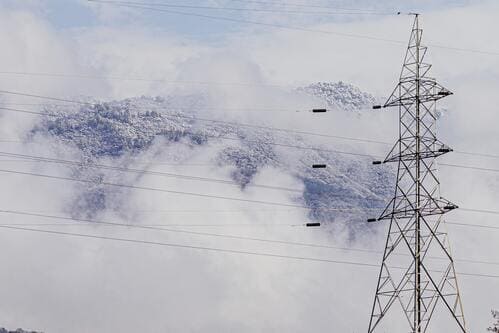Multicore fiber optic sensors have found a range of applications in different fields. One of them is 3D shape sensing which has greatly risen in recent decades. Nowadays, 3D shape sensing can be produced for industrial necessities or for the area of research depending on the purposes of applications. Multicore fiber optic sensors have proved to be the most effective instruments for this technology in comparison with other methods. They are used particularly in the cases when there is a need for the most precise measurements and minimal invasive procedures.
What is 3D Shape Sensing?
Fiber optic 3D shape sensing is a fiber optic technology that applies a fiber optic cable for permanent monitoring of the objects’ 3D shape and position in real-time.
Shape sensing has a capability of finding and detecting all the deformation processes that take place at one or more locations along the fiber optic cable. This fiber optic technology can detect just one kind of deformations with certain types of fiber optic sensors or a range of deformations with the types of several distributed measurements.
Multicore optic fibers themselves have an ability to transmit the data at high speed. They also can be applied as fiber optic sensors, when they have fiber Bragg gratings (FBGs) in the cores. FBGs are reflective gratings that can filter specific wavelengths. Any changes of the form or position cause the wavelength changes.
As for the 3D shape sensing, there is a special way of fiber Bragg gratings’ inscription into multicore fibers. Firstly, they are spun while stretching. Then fiber Bragg gratings are written along the cores’ length. This technique makes it possible to identify the fiber’s rotation as well as three-dimensional changes.
The Most Common Advantages of the 3D Shape Sensing
Fiber optic sensors are proved to be effective in different technologies. They are especially suitable when there is a need for a complex measurement system. It usually involves the whole system with a number of fiber optic sensors and can provide the measurements of several characteristics simultaneously.
Moreover, FBG sensors have a range of other benefits in comparison with other traditional sensors. So, fiber optic sensors are:
- highly sensitive to temperature and strain modifications that lead to the high levels of accuracy;
- immune to external electromagnetic interference;
- lightweight and small sized;
- easy to attach and reliable;
- corrosion resistance;
- resistant to the harsh environmental conditions such as humidity, high temperatures, etc.
Due to their compact size, fiber optic sensors can be embedded in small devices and objects. Moreover, they can be implemented into distributed sensing systems so the FBG interrogator units can be installed at some other place and send all the data remotely without any wiring.
Fiber Optic Sensors Applications in 3D Shape Sensing
3D shape sensing technology has recommended itself as an effective and even preferable instrument.
This technology has a significant use in the structural health monitoring of different constructions such as buildings, bridges, etc. Besides, fiber optic sensors are produced for aircraft monitoring. Fiber optic solutions are also utilized for damage detection, deformation monitoring and structural fatigue life evaluation. Moreover, intelligent material deformation and intelligent robot posture monitoring are of the applications where fiber optic technology is used.
3D Shape Sensing in Medicine
As for the medicine and biomedical fields, fiber Bragg gratings (FBGs) as well as 3D shape sensing have got a special place. This technique has significantly decreased the healing and rehabilitation time and resulted in minimum functional and cosmetic damage to the body. Here are some examples where fiber optic sensors have proved to be an effective option:
- FBG sensors have found a wide range of applications connected to cardiac activities and cardiovascular diseases. They are applied in artery pressure detection, intra-aortic balloon pumping, etc.
- In surgery, they are applied as surgical instruments that, among all other options, help in visualization. If we are talking about laparoscopic or robotic surgery, the process of visualization has become more simple due to the fiber endoscopes.
- Endourology is another field that uses shape sensing technology’s advantages. One of the endourological procedures is cystoscopy that means the treatment of bladder and tumors. Sensing technology makes the device navigation and localization process better. As a result, specialists can carry out operations faster and safer, therefore, conducting the procedures more effectively.
- 3D shape sensing was able to improve another medical field called colonoscopy. A common colonoscope coupled with the fiber optic technology makes the navigation better and allows preventing most challenges that specialists usually face. Due to the benefits of the fiber optic solutions, including shape reconstruction over the whole device, specialists can get the data about the procedure in real time. As a result, medical procedures become safer and more comfortable.
- Epidural anesthesia is getting popular in difficult operations where pain management methods are required. The insertion procedure is conducted with a thin needle that makes it impossible to use most of the sensors due to their size. However, fiber optic sensors based on the distributed sensing principle are able to solve this problem. Specialists have conducted accurate calculations to provide a navigation system that is able to make the correct penetration into the tissue easier. So, it also helps the operators in determination whether the epidural space has been reached.
All in all, 3D shape sensing is a fiber optic technology that has found many applications and become an indispensable tool in medicine, for example, as needles and catheters. Fiber optic sensors, being cost-effective tools, are especially irresistible when there is a requirement in detecting small deformations.
Optromix is a fast-growing vendor of fiber Bragg grating (FBG) product line such as fiber Bragg grating sensors, for example, FBG strain sensors, FBG interrogators and multiplexers, Distributed Acoustic Sensing (DAS) systems, Distributed Temperature Sensing (DTS) systems. The company creates and supplies a broad variety of fiber optic solutions for monitoring worldwide. If you are interested in structural health monitoring systems and want to learn more, please contact us at info@optromix.com










 Scientists from Latvia made a number of experiments using fiber optic technology for monitoring the condition of the road surface. They chose special FBG sensors that can collect data about roadway changes, like changes in the strain and temperature. These fiber optic solutions that also include applying fiber Bragg gratings (FBGs) will help in designing reliable roads and planning for road repairs.
Scientists from Latvia made a number of experiments using fiber optic technology for monitoring the condition of the road surface. They chose special FBG sensors that can collect data about roadway changes, like changes in the strain and temperature. These fiber optic solutions that also include applying fiber Bragg gratings (FBGs) will help in designing reliable roads and planning for road repairs.